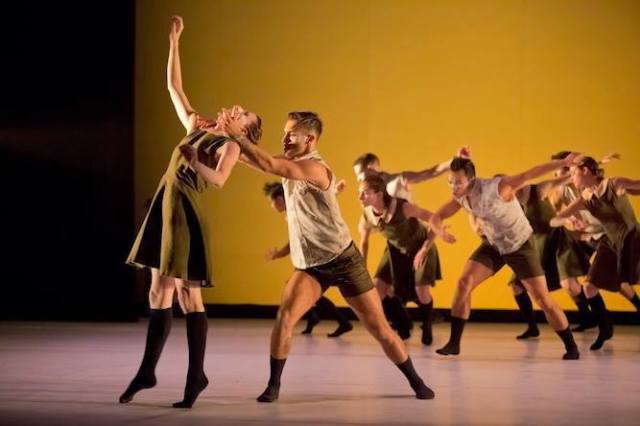Review: NW Dance Project's "New Now Wow!"

Northwest Dance Project does not hold back. In its season opener, New Now Wow!, featuring world-premiere works by three avant-garde choreographers, the company reminded us that experimenting and pushing boundaries results in the most memorable of art.
The show’s opening piece, choreographer Loni Landon’s The Practice of Being Alone, explored solitude, interruption, and replacement. Commanding the direction of the show, powerful music filled the theater as the curtains opened on a group of dancers frozen in obscure shapes and formations under a single bright spotlight. The dancers followed the spotlight as it migrated around the stage, illuminating rivetingly entangled bodies. Whether in duos, trios, or larger groupings, these seven performers showed tremendous chemistry. And from minute isolations of the wrist to movements grand and explosive, Landon’s choreography was fiercely intriguing.
The next act featured Danielle Agami’s artful yet abstract work This Time Tomorrow. In the piece, two dancers run full-speed towards each other and collide in a seemingly painful way, then dance rapidly against one another in an aggressive manner. Meanwhile, dancers slide sluggishly across the stage on their backs as oranges are rolled across the floor. It felt silly at times, one dancer convulsing while another did “the worm” as grungy electronic music alternated with silence. Still, it was aesthetically pleasing. Agami’s staccato choreography was brilliantly synchronized with the music, and the dancers managed to portray tension, joy, longing, and loss all at once. Dancer Franco Nieto, in particular, stood out, his exceptional athleticism and precision magnetizing the eyes of the audience.
The showcase ended on a much more dynamic note with James Gregg’s Malign Star. This full-company piece told the story of a band of orphans who turn against one another mid-routine. The impact of Gregg’s work came not only from the ensemble’s cohesiveness, but from hard-hitting choreography and the smart use of light, shadow, and eclectic music. In one standout segment, the dancers formed a semicircle and performed impressive mini-solos under the cryptic glow of red lighting. For the piece’s gorgeous closing segment, the back curtain opened, allowing the lights to beam straight into the crowd, and the dancers walked forward together, leaving one soloist dancing on in the shadows. Though Malign Star sometimes felt long and disjointed, compelling segments like these, along with the ceaseless energy of the performers, kept the piece afloat.




